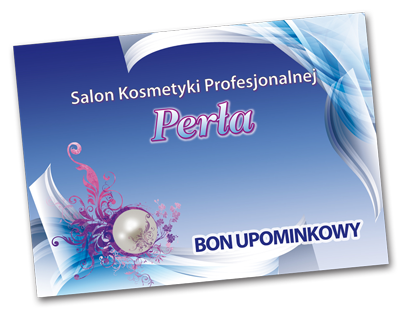Perfekcyjne kremowe gniazdo ptaka pod oczy - Sekrety pielęgnacji skóry i piękna
Estimated Delivery Date Details
Twoje oczy mogą mieć wszystko: jędrność. Wytrzymałość. Blask. I nowy, bardziej uniesiony wygląd.
Dzięki Kwiatom Hibiskusa zbieranych o poranku (pozyskiwany naturalnie w 99%. (1) ) i ekskluzywnym ekstraktom z Drzewa Moringa wzmocnisz swoją skórę wokół oczu, aby odkryć pełen potencjał swojej skóry.
SKŁADNIKI MOCY MŁODOŚCI
Ekskluzywny Ekstrakt z Kwiatów Hibiskusa zbieranych o poranku
Natura w jej najpotężniejszej formie. Naukowcy z Estée Lauder odkryli, że kwiaty Hibiscus sinensis zbierane na początku dnia mają najwyższą aktywność wzmacniającą kolagen. Dlatego rano zbieramy ręcznie wybrane kwiaty, aby uzyskać szczytową moc, a następnie – w procesie, który trwa 83 dni od zbioru do wyprodukowania – tworzymy nasz ekstrakt, który silnie wspiera naturalny kolagen w skórze.
Ekskluzywny Ekstrakt z Drzewa Moringa
Często nazywana „cudownym drzewem", Moringa jest jednym z najskuteczniejszych składników mocy młodości, jakie kiedykolwiek odkryliśmy. Nasz ekstrakt, stworzony w ekskluzywnym, zgłoszonym do opatentowania procesie, wspiera silne białko, pomagając skórze wzmocnić wiele ścieżek przeciwstarzeniowych.
Ekstrakt z Komórek Macierzystych z Kaktusa oraz Kwas Hialuronowy
Dodatkowe wysokowydajne składniki zwiększają moc Revitalizing Supreme+. Napar z ekstraktu z Komórek Macierzystych Kaktusa i Kwasu Hialuronowego pomaga odsłonić silniejszą, odżywioną skórę, nasyconą 72-godzinnym nawilżeniem. Wzmocniona zostaje witalna bariera nawilżenia skóry.
Technologia Wzmacniająca Kolagen
Nasza formuła łączy naturalne składniki z Technologią Wzmacniania Kolagenu, aby zwiększyć poziom produkcji kolagenu. Skóra stanie się jędrniejsza i bardziej uniesiona.
(1) Zgodnie z normą ISO. Z roślin, minerałów niebędących pochodnymi ropy lub wody.
Składniki
Ingredients: Water\Aqua\Eau, Methyl Trimethicone, Propanediol, Isododecane, Polyethylene, Dimethicone, Butylene Glycol, Hydrogenated Polyisobutene, Dimethicone/Vinyl Dimethicone Crosspolymer, Cetyl Peg/Ppg-10/1 Dimethicone, Stearyl Dimethicone, Nylon-12, Isononyl Isononanoate, Moringa Oleifera Seed Extract, Hibiscus Sinensis Flower Extract, Sodium Hyaluronate, Acetyl Hexapeptide-8, Laminaria Digitata Extract, Whey Protein\Lactis Protein\Proteine Du Petit-Lait, Opuntia Tuna Extract, Acetyl Glucosamine, Tocopheryl Acetate, Narcissus Tazetta Bulb Extract, Squalane, Hydrolyzed Rice Extract, Algae Extract, Limonium Vulgare Flower/Leaf/Stem Extract, Cucumis Sativus (Cucumber) Fruit Extract, Silybum Marianum (Lady'S Thistle) Extract, Mimosa Tenuiflora Bark Extract, Helianthus Annuus (Sunflower) Seed Extract, Sigesbeckia Orientalis (St. Paul'S Wort) Extract, Caffeine, Hordeum Vulgare (Barley) Extract\Extrait D'Orge, Triticum Vulgare (Wheat) Germ Extract, Propylene Glycol Dicaprate, Glucose, Magnesium Sulfate, Sucrose, Glycerin, Pinanediol, Camphanediol, Hexylene Glycol, Caprylyl Glycol, Boron Nitride, Maltodextrin, Aminopropyl Ascorbyl Phosphate, Methicone, Artemia Extract, Polysilicone-11, Alumina, Isoceteth-20, Disteardimonium Hectorite, Peg-10 Dimethicone, Lauryl Peg-9 Polydimethylsiloxyethyl Dimethicone, Citric Acid, Octadecene, Triethoxycaprylylsilane, Disodium Edta, Bht, Potassium Sorbate, Chlorphenesin, Phenoxyethanol, Titanium Dioxide (Ci 77891), Iron Oxides (Ci 77491)
Conservation and Protection
Ensuring Safe Nesting Grounds
Many of the world’s birds are threatened by the destruction of their natural environment, although species with restricted breeding ranges and specific nesting requirements are often the worst affected.
Colony nesting species like seabirds are particularly vulnerable to habitat destruction and disturbance by human development and introduced predatory species like cats and rats.
Protecting the breeding habitats and nesting grounds of these and other birds is vital for their ongoing survival and conservation.
Legal and Ethical Protocols
Observing nesting birds can be fascinating and exciting, but it’s best to keep our feathered friends’ interests at heart. Approaching nesting birds causes them great anxiety and even causes nest failure in some cases, so stay back and reach for your binoculars instead of reaching for a bird’s nest.
Observing nesting birds can be fascinating and exciting, but it’s best to keep our feathered friends’ interests at heart
Diversity in Nesting Habits
Varying Architectures
The classic bird’s nest is somewhat cup or bowl-shaped, with a rounded profile when viewed from above or below. This shape prevents the eggs and young chicks from falling from the nest while providing a platform where the adult birds can incubate in safety.
However, nests come in a surprising array of shapes and sizes. Many ground-nesting birds scrape away at the soil or sand to create a slight depression, which they may or may not line with other materials.
While most nests are somewhat 2-dimensional, many birds build ball-shaped nests, complete with walls and a roof. These nests may be positioned on a surface or hang suspended below some kind of anchor point. The entrance to these nests may be from below or the side and some even have false openings to fool predators.
An African Southern Masked Weaver constructing its nest
Nesting Material Choices
Birds use various natural and man-made materials to build their nests. Some species will use just about anything they can find, while others source specific materials and use them during particular phases of construction.
Plant matter, like twigs, forms the basis of most birds’ nests, but you might spot any of the following materials in a nest, depending on the species that built it.
Plant materials
Animal materials
- Animal hair
- Feathers
- Spider webs
- Sea shells
- Bird saliva
Inorganic and artificial materials
- Mud/clay
- Plastic
- Thread
- Paper
 U nas zapłacisz kartą
U nas zapłacisz kartą
